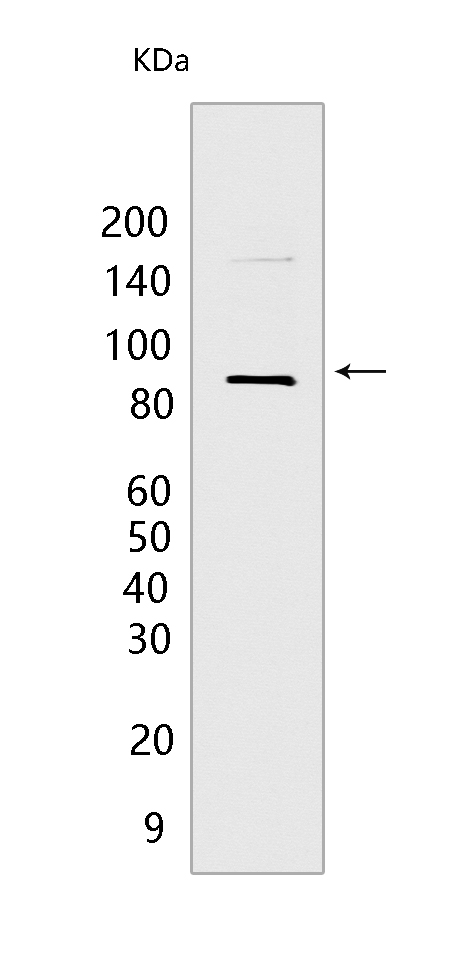CUL2 Mouse mAb[84TF]Cat NO.: A34637
Western blot(SDS PAGE) analysis of extracts from MCF-7 cells.Using CUL2 Mouse mAb IgG [84TF] at dilution of 1:1000 incubated at 4℃ over night.
Product information
Protein names :CUL2,CUL2_HUMAN,Cullin-2
UniProtID :Q13617
MASS(da) :86,983
MW(kDa) :90kda
Form :Liquid
Purification :Protein A purification
Host :Mouse
Isotype :IgG
sensitivity :Endogenous
Reactivity :Human,Rat
- ApplicationDilution
- 免疫印迹(WB)1:1000-2000
- 免疫组化(IHC)1:100
- The optimal dilutions should be determined by the end user
Specificity :Antibody is produced by immunizing animals with a synthetic peptide of human CUL2.
Storage :Antibody store in 10 mM PBS, 0.5mg/ml BSA, 50% glycerol. Shipped at 4°C. Store at-20°C or -80°C. Products are valid for one natural year of receipt.Avoid repeated freeze / thaw cycles.
WB Positive detected :MCF-7 cells
Function : Core component of multiple cullin-RING-based ECS (ElonginB/C-CUL2/5-SOCS-box protein) E3 ubiquitin-protein ligase complexes, which mediate the ubiquitination of target proteins (PubMed:11384984, PubMed:26138980, PubMed:29779948, PubMed:29775578). CUL2 may serve as a rigid scaffold in the complex and may contribute to catalysis through positioning of the substrate and the ubiquitin-conjugating enzyme (PubMed:9122164, PubMed:10973499, PubMed:11384984, PubMed:12609982, PubMed:24076655). The E3 ubiquitin-protein ligase activity of the complex is dependent on the neddylation of the cullin subunit and is inhibited by the association of the deneddylated cullin subunit with TIP120A/CAND1 (PubMed:12609982, PubMed:24076655, PubMed:27565346). The functional specificity of the ECS complex depends on the substrate recognition component (PubMed:9122164, PubMed:10973499, PubMed:26138980, PubMed:29779948, PubMed:29775578). ECS(VHL) mediates the ubiquitination of hypoxia-inducible factor (HIF) (PubMed:9122164, PubMed:10973499). A number of ECS complexes (containing either KLHDC2, KLHDC3, KLHDC10, APPBP2, FEM1A, FEM1B or FEM1C as substrate-recognition component) are part of the DesCEND (destruction via C-end degrons) pathway, which recognizes a C-degron located at the extreme C terminus of target proteins, leading to their ubiquitination and degradation (PubMed:26138980, PubMed:29779948, PubMed:29775578). ECS complexes and ARIH1 collaborate in tandem to mediate ubiquitination of target proteins (PubMed:27565346)..
IMPORTANT: For western blots, incubate membrane with diluted primary antibody in 1% w/v BSA, 1X TBST at 4°C overnight.


